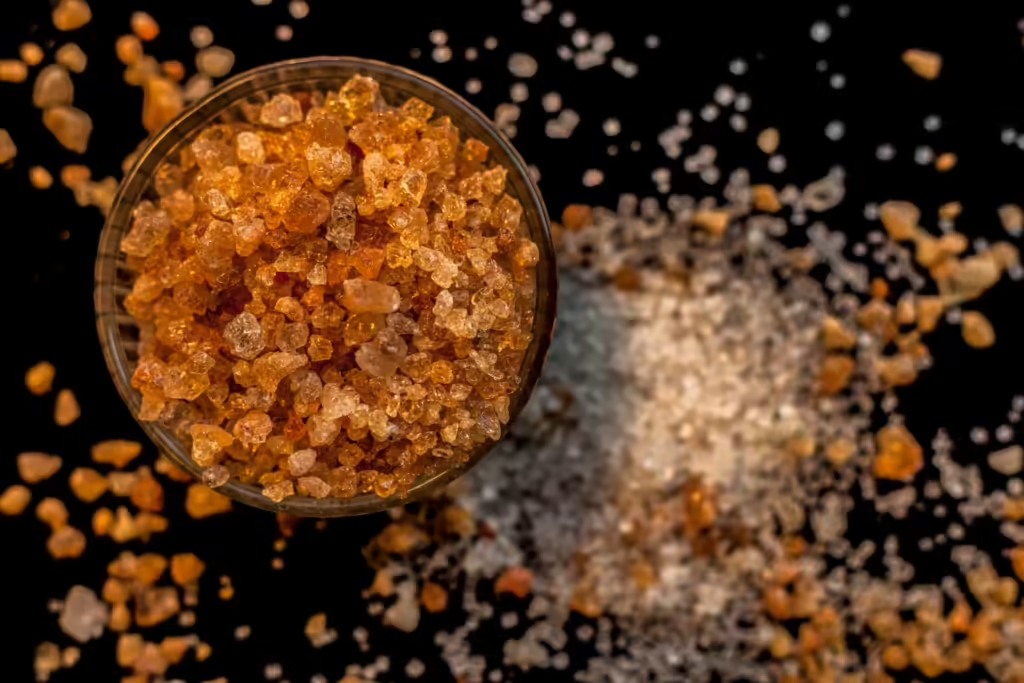When you hear “Arabic Gum,” you probably think of food, beverages, or cosmetics. This versatile natural product, derived from the sap of the Acacia tree, is a popular ingredient for thickening, stabilizing, and emulsifying. But did you know that Arabic Gum also plays a vital role in forensic science? Yes, this humble gum is not only a pantry staple but also a tool in solving criminal cases. Here’s how!
What is Arabic Gum?
Before diving into its forensic uses, let’s cover the basics. Arabic Gum, also known as gum acacia, is a natural gum made from the hardened sap of certain species of Acacia trees. It’s rich in polysaccharides, which make it useful in many industries, from food and pharmaceuticals to printing and textiles.
Arabic Gum and Forensic Science
Forensic science relies on cutting-edge technology and surprising materials to help investigators uncover the truth. One of the lesser-known but fascinating uses of Arabic Gum is in fingerprinting, one of the most crucial techniques in forensics.
1. Fingerprint Preservation
One of the key roles of Arabic Gum in forensic science is preserving latent fingerprints. Latent fingerprints are invisible prints left on surfaces, which are essential clues in crime scenes. Arabic Gum is applied to these prints to preserve their integrity for further analysis. Its sticky yet delicate nature helps safeguard the print’s details, making it easier to visualize and study.
2. Lifting Dust Particles
Forensic experts also use Arabic Gum to lift dust particles from surfaces where evidence may be found. When mixed with water or other solutions, the gum forms a tacky substance that can adhere to fine particles. This is especially useful when investigators need to analyze the trace evidence collected from fabrics, carpets, or furniture.
3. Creating Molds for Bullet Casings
In some forensic procedures, Arabic Gum is used to create molds. When investigating firearms, experts need to study bullet casings closely. Arabic Gum is ideal for creating an exact replica of the casings, capturing minute details that might otherwise be overlooked.

4. Stabilizing Forensic Samples
In forensic labs, maintaining the condition of samples is critical. Arabic Gum’s stabilizing properties are employed to protect delicate samples, such as DNA material, during transportation and storage. This ensures the samples stay intact and uncontaminated, improving the accuracy of forensic results.
Why Arabic Gum Works in Forensics
What makes Arabic Gum so valuable in forensics is its unique chemical composition. It’s water-soluble, safe to use, and gentle enough not to interfere with the properties of the evidence. Its versatility allows it to be used in a variety of forensic applications, from crime scene investigations to lab analyses. It’s natural, affordable, and accessible, which makes it a favorite tool in forensic science globally.
Beyond the Lab: Arabic Gum’s Other Roles
While its use in forensic science is intriguing, Arabic Gum has a long history in many fields. From ancient Egyptians using it in ink to modern-day uses in pharmaceuticals, the versatility of Arabic Gum extends far beyond the forensic lab. It’s used to produce emulsions in soft drinks, improve the texture of candies, and even in crafting natural skincare products. Its long shelf life and safety profile make it a product with endless applications.
Conclusion
Who would have thought that Arabic Gum, commonly found in your kitchen or beauty products, could be an essential tool in solving crimes? Whether it’s preserving fingerprints, lifting dust particles, or stabilizing samples, Arabic Gum continues to play a vital role in forensic science. So, next time you come across this natural gum, remember its hidden talents in cracking the case.
At Ajigofarms, we take pride in offering top-quality Arabic Gum and other agro commodities to meet global needs. From food and beverages to scientific applications, our products help industries thrive across the world.




